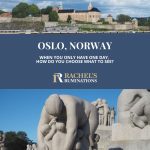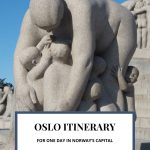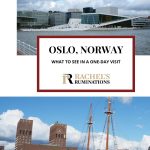One day in Oslo itinerary: All the highlights
It’s no secret that Norway is an expensive country to visit, but that’s no reason to write off a trip there entirely. Oslo is a beautiful city with plenty to see, so here’s a guide to help you spend just 24 hours in the magical city that is the Norwegian capital.
Disclosure: This article contains affiliate links. If you click on one and make a purchase, I will receive a small commission. This will not affect your price.
I’m going on the assumption that you are starting in Oslo city center, perhaps at the Central Train Station or one of the city center hotels. I’ve listed a few places to see in the morning, then I’ve included essentially three different choices: more things to see in Oslo City Center, a cluster in a different part of the city where there are a number of sights related to Oslo’s maritime history, and a few more outliers for those who like the outdoors. Chances are you’ll only be able to fit one of these clusters into your day. Of course, you could certainly use that as an excuse to stay in Oslo an extra night or two to see everything!
You’ll likely be able to save money while following one of these itineraries by purchasing the Oslo pass. Depending on your itinerary and the number of days you’re spending in the city this may help you experience more of what Oslo has to offer without the added cost. It also covers public transportation.
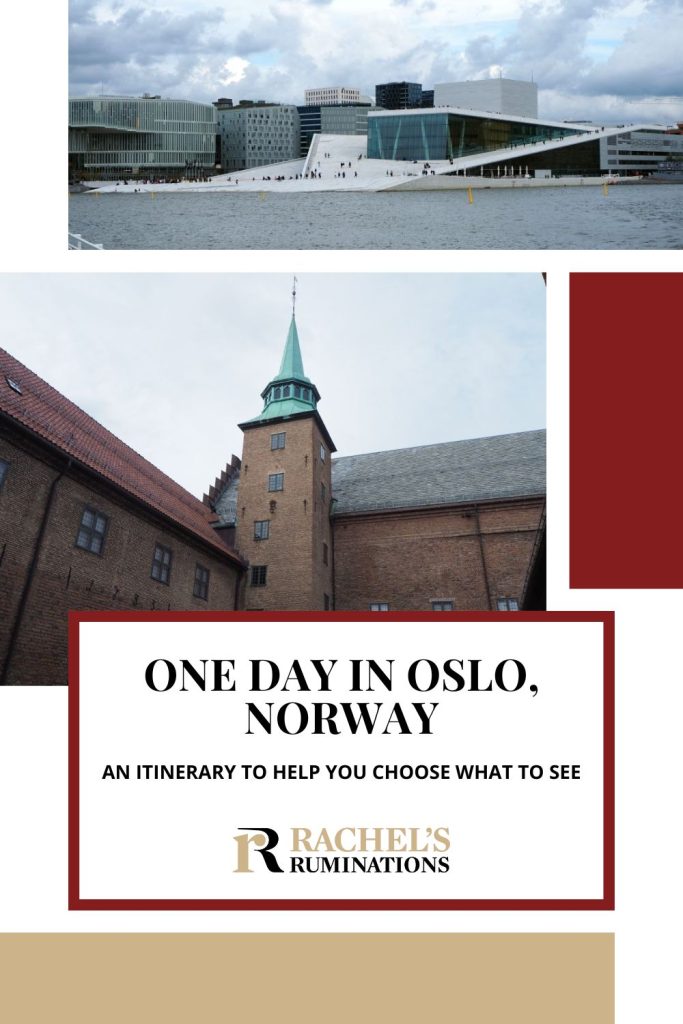
Morning
Wake up in one of the hotels across Oslo city centre and get ready to explore! Finding a hotel in Oslo with breakfast is going to save you around €15 per person when compared to buying breakfast in a café in the city.
Use the map below to explore accommodation options in Oslo. It’s centered on the Central Train Station but you can zoom out to see more:
In the morning, you can cover the cluster of sights that are relatively near Oslo Central Train Station: Oslo Cathedral, the Norwegian National Opera and Ballet, and the Munch Museum.
Alternatively, consider going on a guided walking tour of the city to learn more about each location you visit along with background information about Oslo and Norway as a whole.
Oslo Cathedral
Oslo Cathedral, formally known as Our Saviour’s Church, was first constructed between 1694 and 1697 in the Baroque style. It was changed to Neo-Gothic style in the 1850s before being restored to its original state in the 1960s. During this restoration in the 1960s, many decorations from the 18th century were uncovered, including an exceptional ceiling painting. They also returned original baroque elements like the altarpiece and the pulpit to their former glory. Oslo Cathedral is used by the Royal Family of Norway for weddings, funerals and other special events.
Once inside, be sure to take note of the highly detailed stained-glass windows, seven of which were designed and created by Emanuel Vigeland. A further 17 stained glass windows were gifted to the church in 1952 by Borgar Hauglid. Keep in mind that this is still an active place of worship, so be respectful.
Located behind Oslo Cathedral you’ll find Basarhallene (the bazaar halls). Constructed between 1841 and 1859, the halls were originally designed by Christian H. Grosch in Neo-Romanesque style and used as a butcher shop. This complex was renovated along with the cathedral in the 1960s and is now home to a number of small independent arts, crafts and antique shops and a handful of cafés and restaurants.
Oslo Cathedral: Stortorvet square. Open daily 10:00-16:00 except on Friday, when it’s open from 16:00-24:00. Free admission. Website (in Norwegian; use Google translate).
The Norwegian National Opera & Ballet
The Norwegian National Opera is the building you’re likely to see on the front page of every Oslo guidebook. A striking architectural design, you don’t have to be interested in opera or ballet to enjoy the Oslo Opera House. Located on the harbour opposite Oslo Central Station, it’s a major attraction so if you happen to be unable to see it from your current location you should find it on signposts around the city.
This beautiful building was completed in 2007 and opened to the public in early 2008. With its modern architecture, it went on to win multiple awards, including the World Architecture Festival Cultural Award in 2008 and the Mies van der Rohe award in 2009.
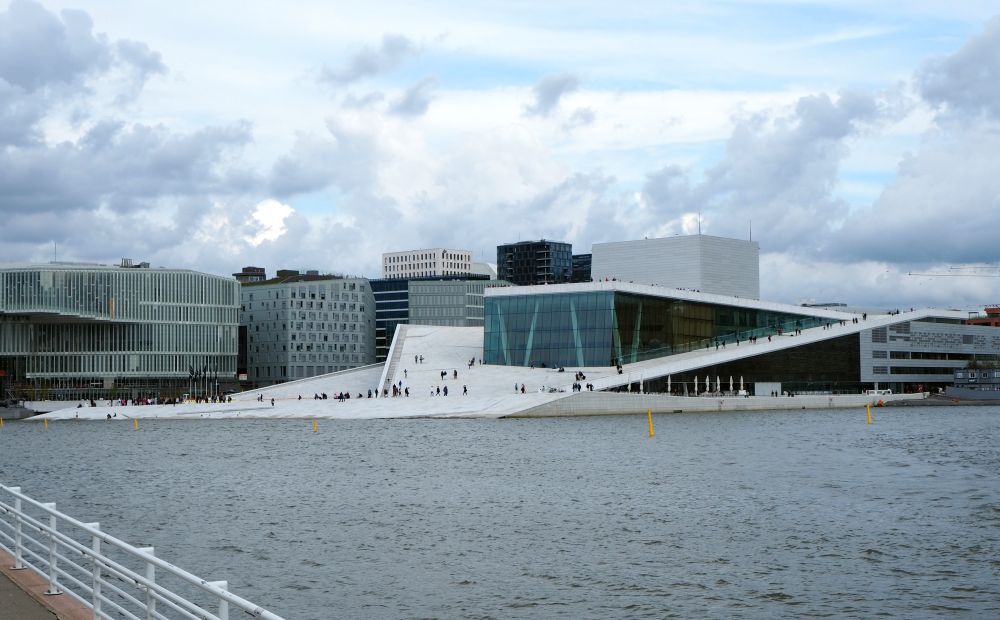
Rather than venturing inside the building, you can walk on top of it. It’s unusual, but this building is completely walkable. Climb along the stairs on either side of the building to the top where you’ll be rewarded with some of the most incredible views out over Oslo.
The steady incline makes climbing to the roof of the building relatively easy. Just be careful on a cold morning in case the floor has iced over. On the other hand, on a warm summer day you might see people swimming right from the building.
If you have an interest in opera or ballet then consider spending an evening enjoying a performance here, or take some extra time discovering the interior of the building.
Guided tours of the interior of the building are available daily and cost 150 kr, discounted by 15% with an Oslo Pass. The tours last 50 minutes and are available in English, Norwegian and sometimes German. You can book the tour in advance online (recommended) or upon arrival. However, each tour has a maximum capacity of 25 persons and can, therefore, sell out quickly, especially during the peak season.
Oslo Opera House: Kirsten Flagstads pl. 1. The foyer is open Monday-Saturday 11:00-22:00 and Sunday 12:00-22:00 and entry is free. Walking the exterior of the building is also free. Website.
Munch Museum
Everybody knows Edvard Munch’s famous painting “The Scream.” At the Munch Museum, very near the Opera House, you can see more work by this accomplished expressionist. The museum also hosts temporary exhibits by other artists. If you’re into modern architecture, the building is definitely worth seeing!
Munch Museum: Edvard Munchs plass 1. Open Sunday-Tuesday 10:00-18:00 and Wednesday-Saturday 10:00-21:00. Admission: 180 kr. Free with the Oslo Pass. Tickets. Website.
Lunch
Just a reminder not to forget to eat! Eating out in Oslo isn’t cheap, but you need fuel. You can find relatively cheap things like sandwiches for lunch, and if you eat it outside as a picnic it’ll cost less than in a restaurant. Alcohol is particularly expensive here, so skip that.
Afternoon
In the afternoon, you’ll need to make some choices. I’ve clustered them here by location and placed them on the map below – color-coded by cluster – as well.
- If you’re interested in learning more about Norwegian history, do the city center cluster (marked in dark red).
- If ships and maritime history are more your thing, go to the maritime cluster (green).
- I’ve added two outliers as well, each of which is a bit further out: the Botanical Garden (including the Natural History Museum) and the Vigeland Sculpture Park (orange).
- The sights listed above for the morning’s sightseeing are in dark purple.
1. Oslo City Center cluster: History and art
There are plenty more sights to see in Oslo City Center, so after lunch you could decide to stay in this area. Choose from the following, I’d suggest, in the order of importance to you, so you don’t run out of time and miss the sights you most want to see.
The Royal Palace: Changing Of The Guards
If you’re only planning on spending one day in Oslo, then I’d suggest visiting the Royal Palace at 13:30 for the changing of the guards. From the Oslo Cathedral or Oslo Central Station, follow the wide and elegant boulevard called Karl Johans Gate toward the Royal Palace. Climb the hill through the public green space surrounding the palace, Slottsparken, to get to the top. Oslo is relatively flat, so climbing to the top of the hill here also provides you with some of the best views out over the city.
The Royal Palace in Oslo looks quite grand, as any self-respecting palace should, but it has a certain simple elegance. And there are no railings, meaning you can get a clear photo of the building.
Most of the year the Royal Palace is the home of the Norwegian royal family, but in the summer I guess they go elsewhere, because that’s when it’s open to the public. You can only visit on a guided tour, and tickets are available from Ticketmaster from early March. Most of the Palace Park, however, is open all the time and free to enter. One section, the oldest part of the park, is only open from mid-May through September, 7:00-20:00.
Royal Palace: Slottsplassen 1. Tours cost 220 kr for adults. Website.
Oslo City Hall
Constructed between 1931 and 1950, Oslo City Hall’s functional exterior architecture is certainly not to my taste. However, the interior is something to marvel at. The main hall of City Hall was decorated by two of Norway’s most highly acclaimed artists; Henrik Sørensen and Alf Rolfsen. Meanwhile, on the second floor, you’ll find rooms decorated with delicate tapestries and paintings depicting scenes from Norwegian history. The bells in the carillon are played every hour on the hour, offering a range of different tunes.
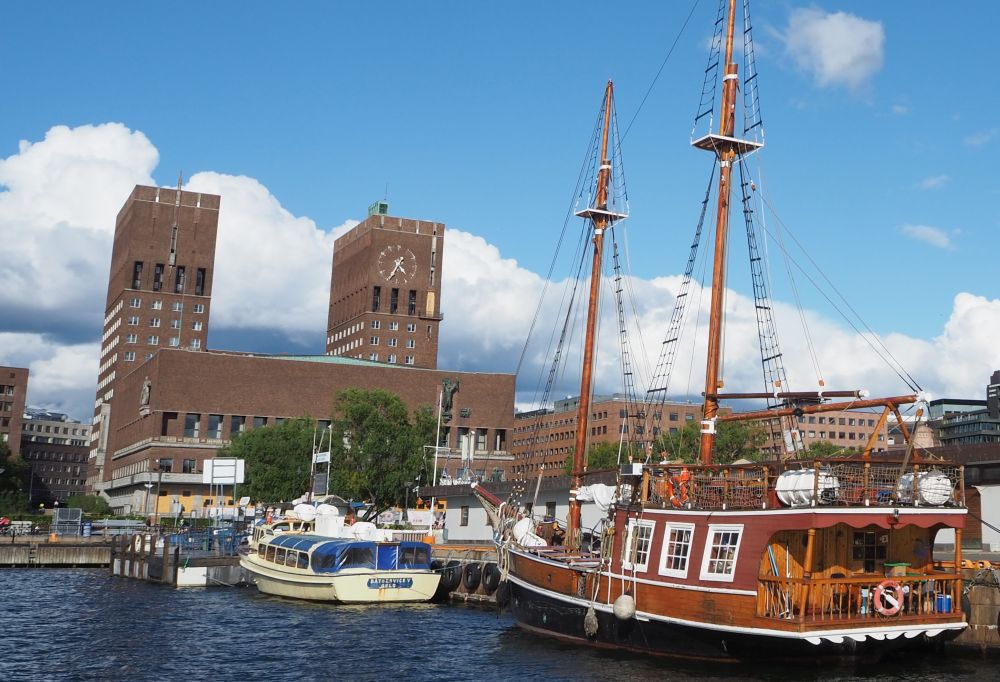
City Hall is free to enter. Free guided tours are available daily from mid-June to the end of August, leaving at 10:00, 12:00 and 14:00.
Oslo City Hall: Rådhusplassen 1. Open daily 9:00-16:00 except for a list of days published on their website.
Akershus Fortress or Akershus festnung
Originally a medieval castle inside a fortress, dating to the early 14th century, Akershus was updated in Renaissance style in the 17th century. It served as a royal residence until the early 19th century. It became a prison after that, and is still a military location today. Inside, you’ll find the Norwegian Military Museum and the Home Front Museum, which covers Norway’s years under German occupation and their resistance movement. There’s also a small church housing the royal tomb. The buildings and grounds offer plenty of opportunity for picturesque photos.
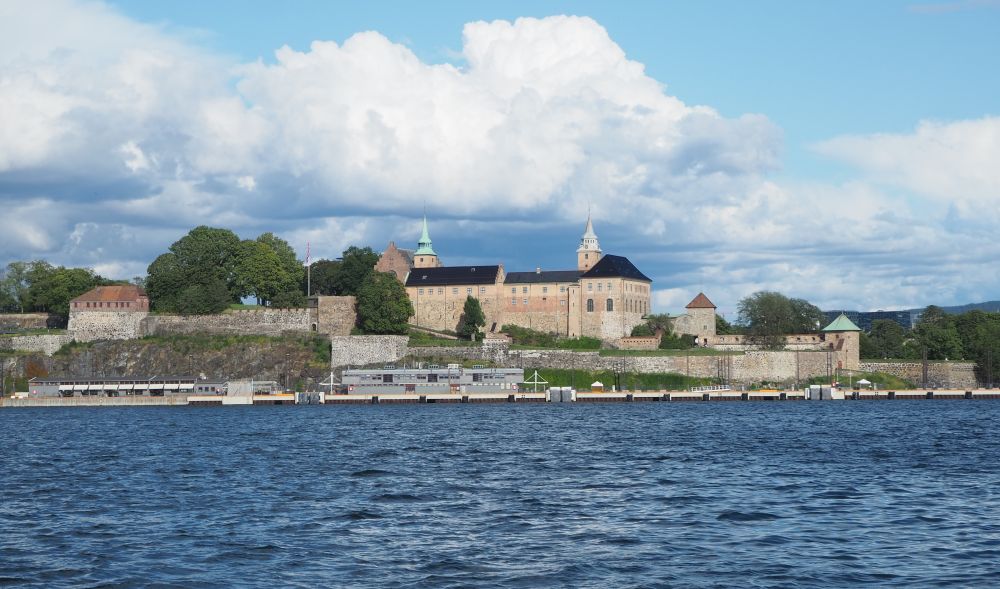
Akershus Fortress: Batteriveien. Open daily 6:00-21:00. Entrance to the fortress is free.
Akershus Castle: Batteriveien. Open May-August Monday-Saturday 10:00-16:00, Sunday 12:00-16:00. September-April: only Saturday and Sunday 12:00-17:00. Entrance to see the inside of the castle costs 100 kr and includes an audio guide. Free admission with Oslo Pass. Website.
Military Museum: Bygning 62. Open daily May-August 10:00-17:00 and September-April 10:00-16:00. Admission: 100 kr. Free with Oslo Pass.
Home Front Museum: Byngning 21. Open daily May-August 10:00-17:00 and September-April 10:00-16:00. Admission: 100 kr. Free with Oslo Pass.
Historical Museum
Inside one of Oslo’s most beautiful buildings, the Historisk Museum features both permanent and changing exhibitions spread over four floors. While Norwegian history is covered, this museum covers aspects of global history as well. On the ground floor, you’ll find large collections from the Middle Ages. These include the likes of gold and silver treasures as well as an interdisciplinary exhibition. There are some beautiful pieces from Viking graves as well: gold and silver jewelry, for example. The remaining floors feature highlights including Egyptian mummies, classical antiquities and African, American and East Asian ethnographic objects.
Historical Museum: Frederiks gate 2. Open Tuesday-Sunday 11:00-17:00 and on Thursdays open until 18:00. Admission 140 kr. Free with the Oslo Pass. Website.
The Norwegian National Museum (Nasjonalmuseet)
Not far from Oslo City Hall is the Norwegian National Museum. Home to the famous painting ‘The Scream’ by Edvard Munch, the museum includes a wide selection of paintings and sculpture, but also interesting design pieces as well as historical clothing, photography and architecture. The collection emphasizes Norwegian works, but has many pieces from elsewhere as well.
The Norwegian National Museum: Brynjulf Bulls plass 3. Open Thursday-Saturday 10:00-17:00 and Tuesday-Wednesday 10:00-20:00. Closed on Monday. Admission 200 kr. Free with Oslo Pass. Website.
2. Maritime cluster: Norway’s sea-going history
The maritime sights all cluster on Bygdøy peninsula not far from the center of the city. You can get there by bus or tram, but it’s much more interesting to take a ferry, with the added benefit of getting some great views of Akershus as you leave the city center. The ferry leaves every half hour from Rådhusbrygge 3 (City Hall Pier 3). Get off at the second stop, Bygdøynes. The ferry only runs in the summer months, so if you’re visiting at another time, use the regular public transportation.
Here too, unless you just skim, you’ll probably have to choose which sights you want to see most and see them first.
And speaking of sea-going, I hope you only have one day in Oslo because you’re on your way to take a Hurtigruten mail boat up the coast of Norway. It’s pretty extraordinary.
Norwegian Maritime Museum
While its focus is Norwegian maritime history, most of what you see at the Norsk Maritimt Museum could apply to pretty much any seagoing nation. It’s all covered here: boating history, life at sea for sailors and others, seafaring-related art, plus an exhibition about the ocean itself. This is one of those places you could either skim through quickly or spend all day. It’s also very child-friendly.
Norwegian Maritime Museum: Bygdøynesveien 37. In October to March, open Tuesday-Sunday 11:00-16:00. Closed Mondays. In April to September, it’s open daily from 10:00-17:00. Admission: 140 kr. Free with Oslo Pass. Website.
Fram Museum
The Fram Museum is built quite literally around a ship called the Fram, one of the ships used in attempts to reach the North Pole. The three Fram expeditions make a wonderfully exciting story. Besides being home to the actual ship, the museum covers polar exploration history (both poles) in plenty of detail. This is another one that you could skim or it could take hours.
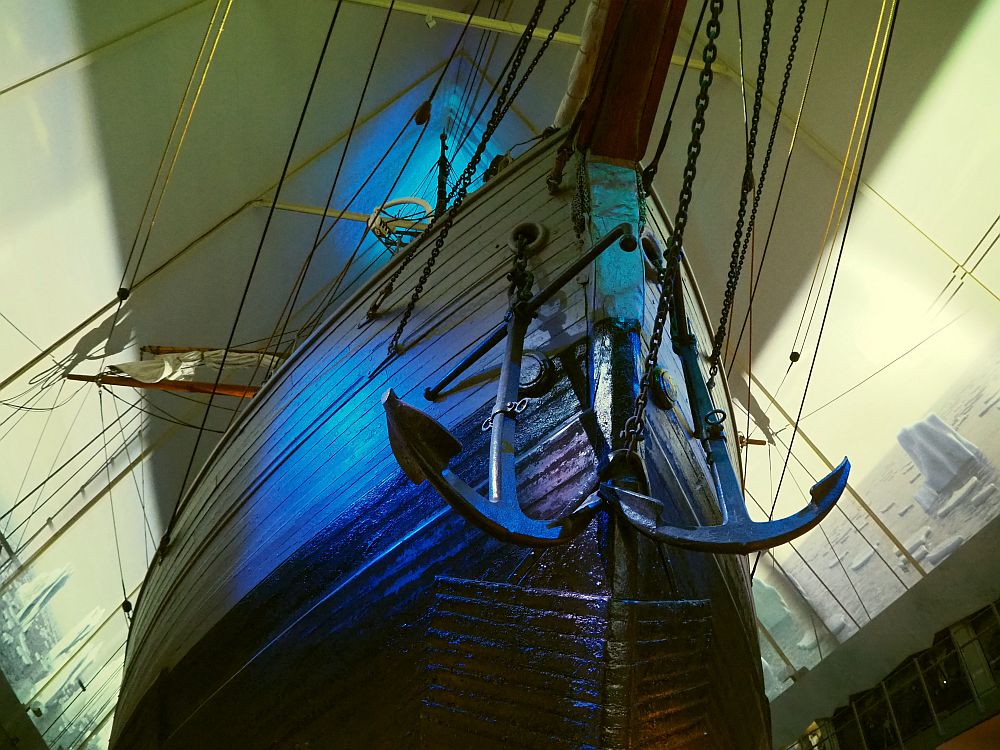
Fram Museum: Bygdøynesveien 39. Open daily in October to April 10:00-17:00 and May to September 9:30-18:00. Admission: 140 kr or get a combined ticket with the Kon-Tiki Museum for 250 kr. Free with Oslo Pass. Website.
Kon-Tiki Museum
Thor Heyerdahl is famous for traveling on a balsa wood raft across the Pacific Ocean from Peru to Polynesia in 1947. The point was to prove it was possible, and that perhaps early indigenous people from South America were the ones to populate Polynesia.
However, the Kon-Tiki voyage was not his only such journey, and this museum documents Heyerdahl’s life and expeditions all over the world. It includes exhibits about each of the places he visited, and even includes the actual Kon-Tiki raft.
Kon-Tiki Museum: Bygdøynesveien 36. Open daily September-April 10:00-17:00; May 10:00-18:00; June-August 9:30-18:00. Admission 140 kr or 250 kr in combination with the Fram Museum. Free with Oslo Pass. Website.
Viking Ship Museum – closed
The Viking Ship Museum houses extremely well-preserved Viking ships that were found in Viking burials. Unfortunately, the museum is closed as it is being extensively rebuilt and improved to better preserve and exhibit the ancient ships. Its planned reopening is in 2027, when its new name will be the Museum of the Viking Age. In the meantime, you can find plenty of Viking-related things to see at the Historical Museum in Oslo city center. You can also see a reconstruction of a Viking ship at the Norwegian Maritime Museum.
Norwegian Folk Museum a.k.a. Norwegian Museum of Cultural History
The Norsk Folkemuseum doesn’t really have to do with Oslo’s maritime past, but it does have to do with Norway’s past in general. This open-air museum is home to 160 historic buildings, many of which you can enter. I love museums like this because they make it really easy to imagine what life was like in a given moment in time. In this case the buildings cover a range of time periods, from Gol Stave Church dating back to around 1200 AD to early 20th-century workers’ housing. There are many farm buildings but also urban structures, and even a prison. Indoor exhibits cover topics like folk dress, folk art, and Sami culture.
Norwegian Folk Museum: Museumsveien 10. Open daily May-September 10:00-17:00 (gates close at 20:00). Open October-April Tuesday-Sunday 11:00-16:00 (gates close at 18:00) and closed on Mondays. Admission: 180 kr. from May to September and Saturdays and Sundays all year except January. On weekdays October-April, and every day in January, admission is 140 kr. Free with Oslo Pass. Website.
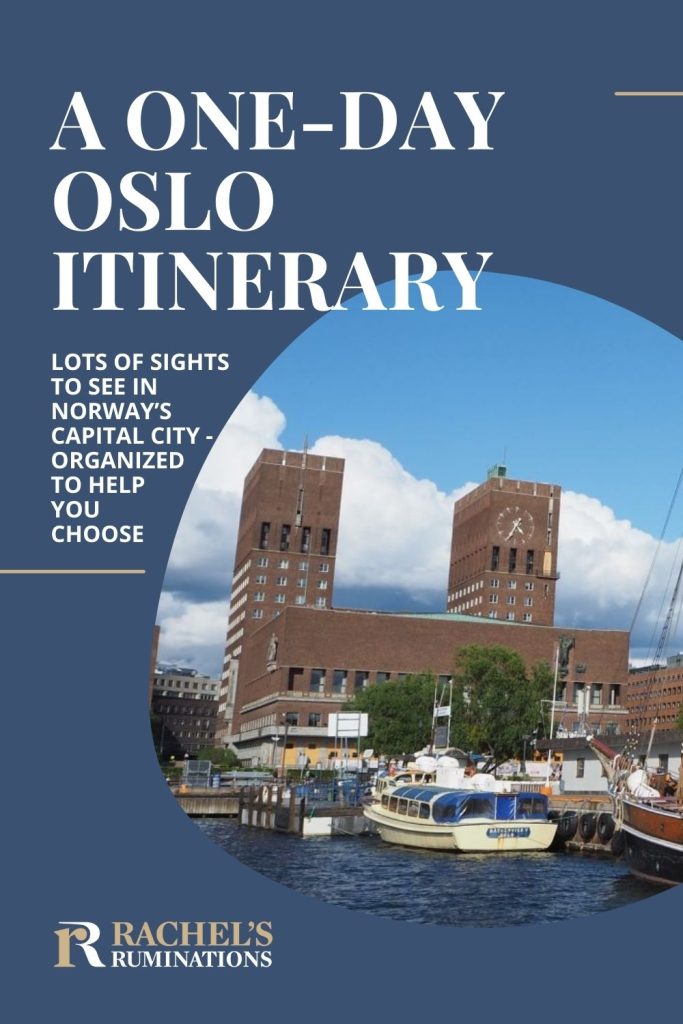
3. Outdoor cluster: Gardens and sculpture
It’s a bit misleading in this case to call these a “cluster” because these two destinations aren’t near each other. They’re both about the same distance from the Royal Palace but in opposite directions. You could walk between them in about an hour and 20 minutes or take the number 2 (orange line) or number 3 (lilac) metro between the Borgen stop (about 15 minutes’ walk from the middle of Vigelandspark) and the Tøyen stop, 8 minutes’ walk from the Botanical Garden. Or take a taxi, Uber or similar.
Oslo Botanical Gardens & Arboretum
The Oslo Botanical Gardens & Arboretum has more than 4,500 types of plants arranged into themed gardens. There’s an herb garden, a Viking garden, “Great-granny’s Garden,” an arboretum and a meadow, to name a few. It’s a great place to escape the hustle and bustle of the city center. Be sure to stop by the Aromatic Garden which has been specially arranged and designed as an experience for the blind and wheelchair-bound.
The Botanical Garden is part of the Natural History Museum, which is located within the grounds of the Botanical Gardens. The museum includes exhibits on geology, zoology, and climate, as well as the botanical garden itself.
The Natural History Museum: Sars’ gate 1 in the Botanical Garden. Open daily 10:00-17:00. Admission: 160 kr. Free with Oslo Pass. Website.
Botanical Gardens and Arboretum: Open daily 07:00-21:00. Free admission.
Vigeland Sculpture Park a.k.a. Frogner Park
This very pleasant city park is home to a collection of 200+ sculptures by Gustav Vigeland, dating to the 1920s and 1930s. Gustav was the brother of Emanuel Vigeland who designed some of the stained-glass windows in the Oslo Cathedral.
Most of Gustav’s statues comprise larger-than-life-sized human figures, some in bronze, some in granite, all naked, and all posed in rather odd groupings. One sculpture, called the Monolith, shows over a hundred people piled into a column and, it seems, striving for … something. Around the Monolith are a series of additional small clusters of human sculptures. Some are charming and exuberant – mothers at play with their children, for example, or couples holding each other tenderly. Some, though, are rather dark, and seem to portray abusive situations. I found the Vigeland works disturbing yet fascinating.
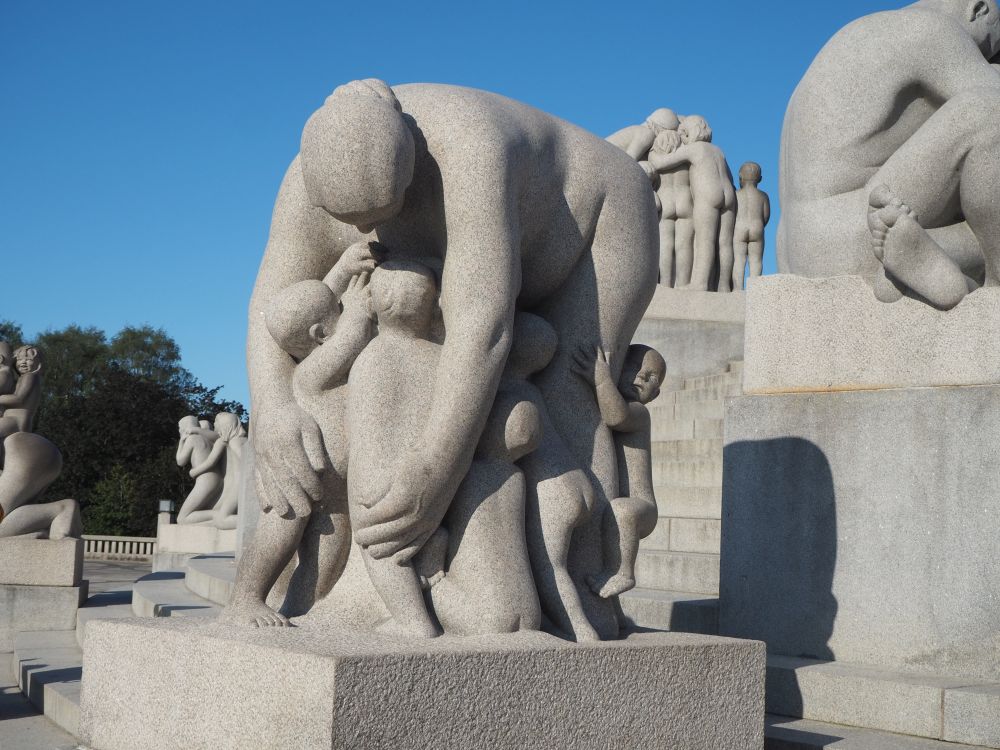
By the way, this could be called the world’s largest sculpture park. In any case, it’s the largest collection of works by a single artist in one park.
Vigeland Park is always open. Free admission.
Evening
Being the capital city of Norway, there’s always something going on in Oslo, especially during the midsummer days when the city remains light for 20 hours out of 24.
I hope this Oslo itinerary has been of use to you. I know there’s too much listed here to see in one day, but hopefully it helps you make some choices. The best way to see Oslo, though, is to take more than a single day. In three days to a week you might very well be able to see everything listed above. Go for it!
(Updated September 17, 2024)
My travel recommendations
Planning travel
- Skyscanner is where I always start my flight searches.
- Booking.com is the company I use most for finding accommodations. If you prefer, Expedia offers more or less the same.
- Discover Cars offers an easy way to compare prices from all of the major car-rental companies in one place.
- Use Viator or GetYourGuide to find walking tours, day tours, airport pickups, city cards, tickets and whatever else you need at your destination.
- Bookmundi is great when you’re looking for a longer tour of a few days to a few weeks, private or with a group, pretty much anywhere in the world. Lots of different tour companies list their tours here, so you can comparison shop.
- GetTransfer is the place to book your airport-to-hotel transfers (and vice-versa). It’s so reassuring to have this all set up and paid for ahead of time, rather than having to make decisions after a long, tiring flight!
- Buy a GoCity Pass when you’re planning to do a lot of sightseeing on a city trip. It can save you a lot on admissions to museums and other attractions in big cities like New York and Amsterdam.
- Ferryhopper is a convenient way to book ferries ahead of time. They cover ferry bookings in 33 different countries at last count.
Other travel-related items
- It’s really awkward to have to rely on WIFI when you travel overseas. I’ve tried several e-sim cards, and GigSky’s e-sim was the one that was easiest to activate and use. You buy it through their app and activate it when you need it. Use the code RACHEL10 to get a 10% discount!
- Another option I just recently tried for the first time is a portable wifi modem by WifiCandy. It supports up to 8 devices and you just carry it along in your pocket or bag! If you’re traveling with a family or group, it might end up cheaper to use than an e-sim. Use the code RACHELSRUMINATIONS for a 10% discount.
- I’m a fan of SCOTTeVEST’s jackets and vests because when I wear one, I don’t have to carry a handbag. I feel like all my stuff is safer when I travel because it’s in inside pockets close to my body.
- I use ExpressVPN on my phone and laptop when I travel. It keeps me safe from hackers when I use public or hotel wifi.


